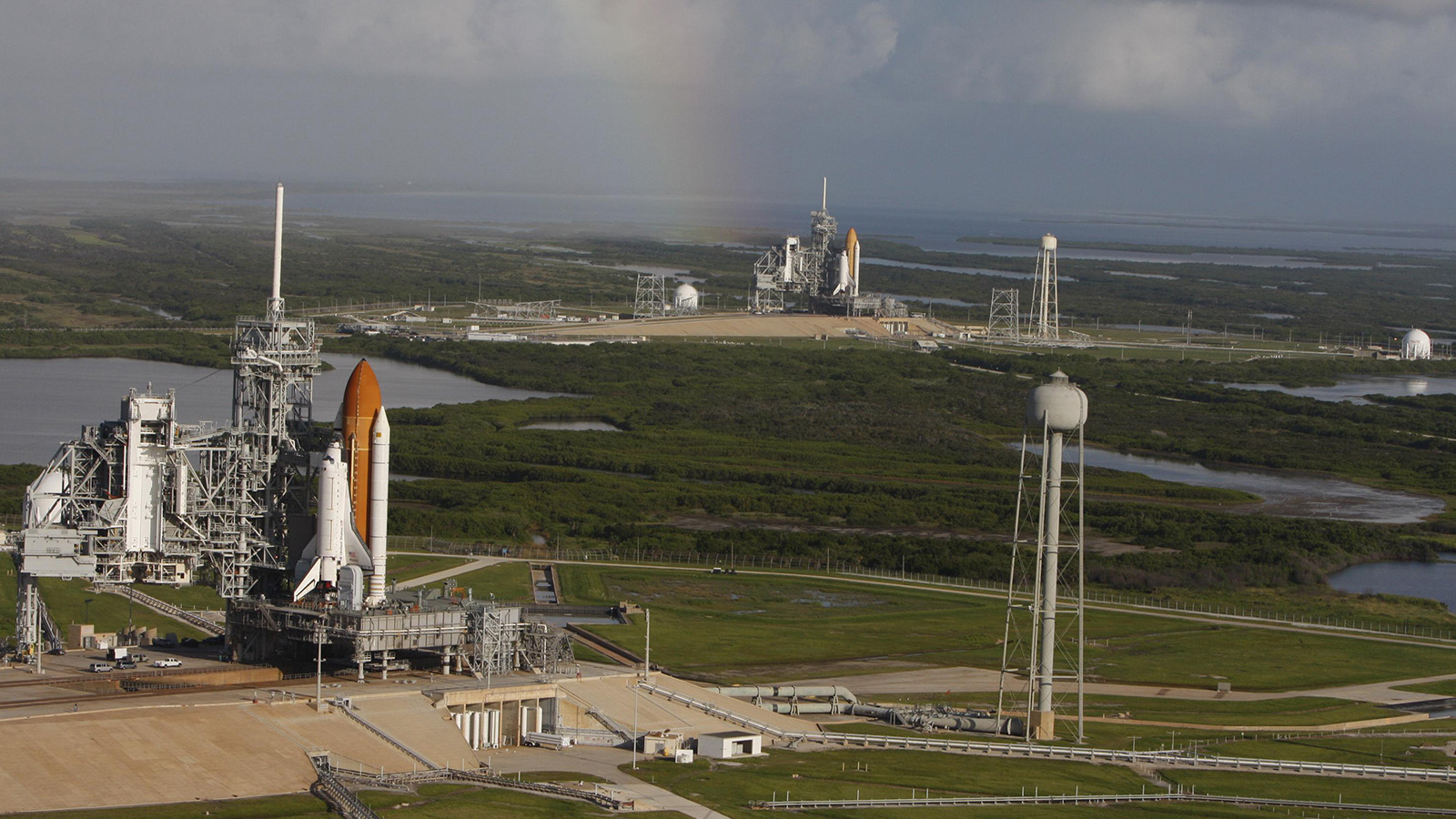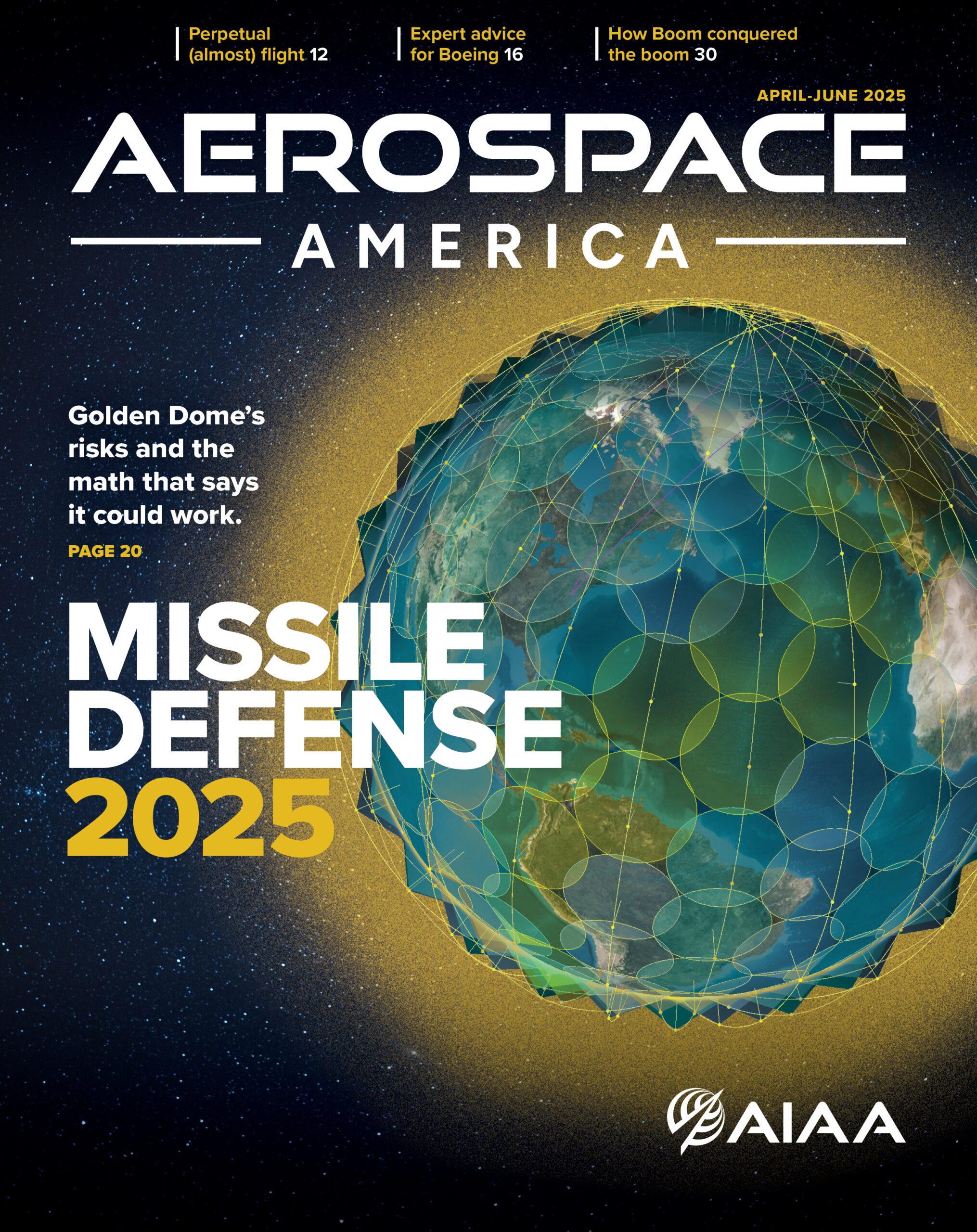Stay Up to Date
Submit your email address to receive the latest industry and Aerospace America news.
This SpaceX Crew Dragon capsule was photographed last year during the private Polaris Dawn mission. Credit: SpaceX
AIAA ASCEND, Las Vegas — Lives will almost certainly be lost in Earth orbit and cislunar space unless space agencies and commercial spaceflight operators jointly develop a rescue capability for astronauts or spaceflight participants in stricken spacecraft. That is the stark message that space safety researchers led by Grant Cates from the Aerospace Corp. plan to deliver this afternoon during a technical presentation here.
The bottom line: the ongoing “acceleration in human spaceflight activity” is not being matched by growth in strategies to rescue astronauts, the paper reads.
A large part of the issue, Cates told me in an interview in advance of his presentation, is the risk that developers of crewed spacecraft and the coming class of commercial space stations might continue to choose different types of docking adapters, rendering rescue operations difficult if not impossible because the craft won’t be able to dock with one another.
Compounding the challenge is that many spacecraft still use dissimilar spacesuits, and the umbilicals on spacesuits from one crewed spacecraft won’t plug into the life support and communications services of another. This was most recently illustrated by the extended stay of NASA astronauts Butch Wilmore and Suni Williams aboard the International Space Station. Once their Boeing Starliner capsule had departed from ISS, the astronauts had to wait for NASA to send up extra spacesuits compatible with their new return vehicle, a SpaceX Crew Dragon capsule.
Cates pointed to something that occurred early on in Starliner’s crewed flight test as an example of a worst-case scenario: While en route to ISS, a handful of Starliner’s thrusters malfunctioned, complicating the docking process.
“As it turned out, they were able to successfully dock [manually] and Starliner returned [uncrewed] autonomously” months later without incident, Cates said. “But I don’t want to lose sight of the fact that future missions may not be as fortunate as Starliner was.”
And then there’s the fact that in the event of an emergency, a rescue spacecraft might not be able to be launched in time. Unlike in the space shuttle days, spaceflight operators do not typically have a spare rocket and capsule on the launchpad ready to go at a moment’s notice if a crew on orbit runs into trouble.
It could all add up to tragedy, said Parker Wishik, Cates’ Aerospace Corp. colleague and co-author. “There are more humans in space than ever before, going up more frequently than ever before, and with a burgeoning space tourism sector, it’s almost a statistical certainty that at some point astronauts are going to encounter a life-threatening crisis in space.”
The authors are not alone in their call-to-action: In October, former NASA administrators Charles Bolden, Jim Bridenstine and Sean O’Keefe published a commentary in the Orlando Sentinel, warning that “we are not fully prepared for the worst possible scenario: humans stranded in space with no hope of rescue.” They called for NASA to “lay the foundations” for “realistic and sensible” in-space search-and-rescue techniques with its global Artemis Accords partners, and then work with the United Nations Committee on the Peaceful Uses of Outer Space to encourage spacefaring nations beyond the Artemis Accords into a cooperative in-space rescue ethos.
So to combat this “rescue gap,” Cates, alongside Wishik and RAND Corp. senior safety engineer Jan Osburg, wrote what they describe as a “technical blueprint” meant to help guide space agencies and commercial operators through the various criteria that must be considered when drawing up plans for an in-space rescue.
This blueprint comprises a three-point concept of operations. First, mission operators should provide whoever is in charge of coordinating a notional rescue — NASA or a commercial entity, for instance — all the germane data well before the launch. Among the required information: a comprehensive description of the spacecraft’s orbital parameters; its mission duration; the number of astronauts aboard; how long life support can last if reentry is not possible; the type of docking system it uses and which other spacecraft are compatible with it.
The second part of the blueprint addresses pre-launch planning on behalf of a designated in-space rescue mission coordinator, who would draw on resources from a number of “space capability providers.” The coordinator’s responsibilities would be to clarify:
- Which rocket, spacecraft and crew will perform the rescue;
- How best to prepare the rocket, spacecraft, crew and a rescue command center for launch after an emergency is called;
- How soon the rescue mission can be launched;
- The mission profile — the time from launch to rendezvous, docking and rescue of astronauts;
- The rescue spacecraft’s EVA [spacewalk] capabilities, including the number of spacesuits needed;
- How to ensure adequate seating for both rescue crew and the rescued;
- What recovery forces are required upon landing.
Cates emphasized that operators should not fear the expense of such endeavors, as many of the proposed measures are meant to be relatively low-cost — for example, rescheduling launch dates so that a backup rocket is always available on the pad to launch a rescue spacecraft.
“The point is not to create additional burden and cost,” he said. “It is to leverage what we already have, which is exactly what NASA did during the Skylab program, and after [the space shuttle] Columbia was lost, when they decided to simply use the next vehicle scheduled for launch and repurpose it for rescue mission standby.”

How that rescue launch scheduling would happen is the subject of the third part of the blueprint, in which the authors propose harnessing the lessons of “tactically responsive” launch exercises, like the one undertaken by the U.S. Space Force in 2023. Called VICTUS NOX, the mission’s aim was to orbit a Millenium Space Systems smallsat — taken randomly off a production line and modified for a national security space task — on a Firefly rocket with just 24 hours’ notice. The catch? Neither provider was told when the starting gun would be fired.
The Space Force and its industry participants managed to get the satellite on orbit and working in 27 hours on the first try, a result that impresses Cates.
“It’s the exact same concept of operations, it’s just we’re doing it for rescue,” he said.
But why launch a rescue mission from Earth rather than, say, a space station already in orbit? That’s one aspect of the blueprint that concerns Brand Griffin, a space systems architect at Genesis Engineering Solutions of Maryland and the program manager for the Single Person Spacecraft. Genesis is designing this crewed, spacesuit-free EVA pod to dock with the future class of commercial space stations.
“I would have preferred to see a trade-off analysis showing why this ground-based rescue blueprint is the favored option for astronaut crew rescue,” Griffin told me by email. Providing rescue in LEO means the blueprint has limited application: “Ground-based systems are not a credible solution for Moon or Mars crew rescue,” he wrote.
In Cates’ view, “A ground-based capability has more flexibility in terms of getting to wider ranges of inclinations and altitudes,” but he added that “this paper is not the end of the line on space rescue; it is a step forward.”
He also agreed with Griffin that “a risk trade-off analysis can and should be done for future situations.”
Among the factors that mission planners should consider, Griffin said, are any possible risks to the crew and stranded astronauts that the rescue poses. For instance, should the rescue plan entail a spacewalk, that “drives requirements at the rescue site and for the rescue vehicle. These include the sizing of suits, in particular gloves, to fit everyone, and a minimum of 2.5 hours pre-breathing pure oxygen to prevent the bends.”
And if those being rescued have not walked in space before, it could be a problem: “Weightless EVA is not intuitive” Griffin noted. “Designated ISS EVA astronauts have over 200 hours of neutral buoyancy tank training before their first EVA.”
About Paul Marks
Paul is a London journalist focused on technology, cybersecurity, aviation and spaceflight. A regular contributor to the BBC, New Scientist and The Economist, his current interests include electric aviation and innovation in new space.
Related Posts
Stay Up to Date
Submit your email address to receive the latest industry and Aerospace America news.




